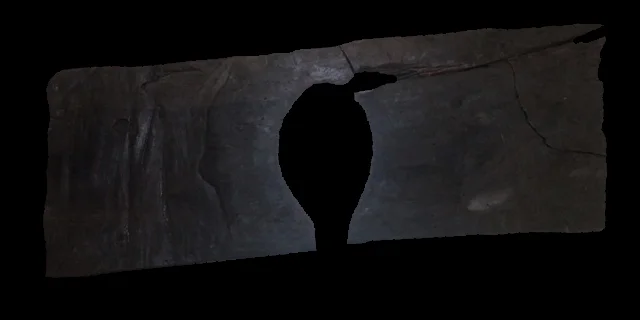Finding something that you can relate to is always a special moment on an archaeological dig.
At Vindolanda this is a common occurrence, a site where the special qualities lie not only in the discovery of gold and silver or artefacts which relate to the military might of the Roman Army but also of everyday ordinary items which nearly 2000 years later become extraordinary to the modern day visitors, volunteers and archaeologists alike.

Personal letters, worn shoes, baby booties, socks, combs, jewellery, tools and textiles are just some of the items preserved in a remarkable condition that provide you with a unique window into the lives of people stationed at this most northern outpost of the Roman Empire.Now archaeologists have another piece of this very personal human hoard at Vindolanda, a wooden latrine (toilet) seat, was discovered by the Director of Excavations, Dr Andrew Birley, in the deep pre-hadrianic trenches at Vindolanda.
There are many examples of stone and marble seat benches from across the Roman Empire but this is believed to be the only surviving wooden seat, almost perfectly preserved in the anaerobic, oxygen free, conditions which exist at Vindolanda. Although this wooden seat is not as grand as a marble or stone toilet bench, it would be far more comfortable to sit on in the cool climate of Britannia. The seat has clearly been well used and was decommissioned from its original purpose and discarded amongst the rubbish left behind in the final fort at the site before the construction of Hadrian’s Wall started in the early second century.

Dr Birley commented on the find ‘there is always great excitement when you find something that has never been seen before and this discovery is wonderful….’ Andrew went on to say ‘We know a lot about Roman toilets from previous excavations at the site and from the wider Roman world which have included many fabulous Roman latrines but never before have we had the pleasure of seeing a surviving and perfectly preserved wooden seat. As soon as we started to uncover it there was no doubt at all on what we had found.
It is made from a very well worked piece of wood and looks pretty comfortable. Now we need to find the toilet that went with it as Roman loos are fascinating places to excavate – their drains often contain astonishing artefacts. Let’s face it, if you drop something down a Roman latrine you are unlikely to attempt to fish it out unless you are pretty brave or foolhardy’. Discoveries at Vindolanda from latrines have included a baby boot, coins, a betrothal medallion, and a bronze lamp.
Archaeologists now need to find a ‘spongia’ the natural sponge on a stick which Romans used instead of toilet paper, and with over 100 years of archaeology remaining and the unique conditions for the preservation of such organic finds a discovery may just be possible.
The wooden seat will take up to 18 months to conserve and once this process is complete the artefact will be put on display at the Roman Army Museum.






